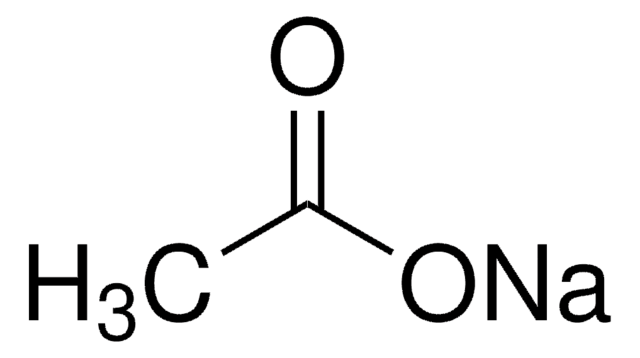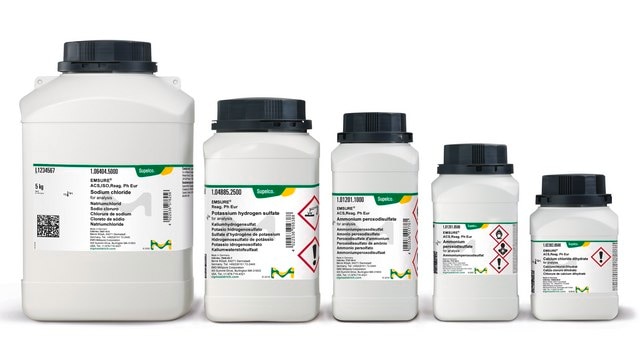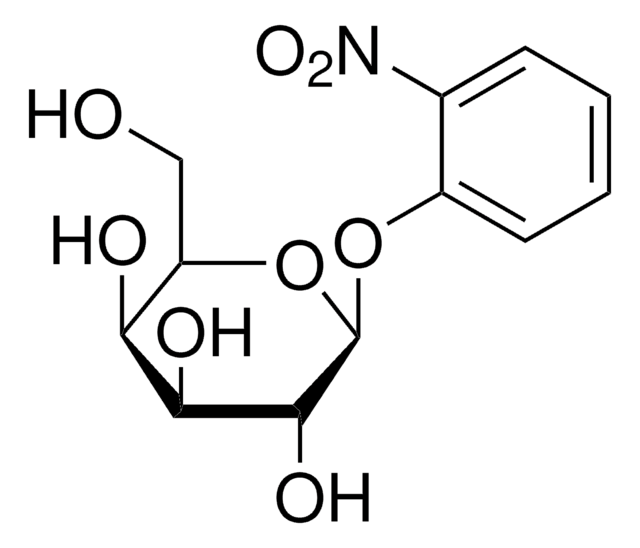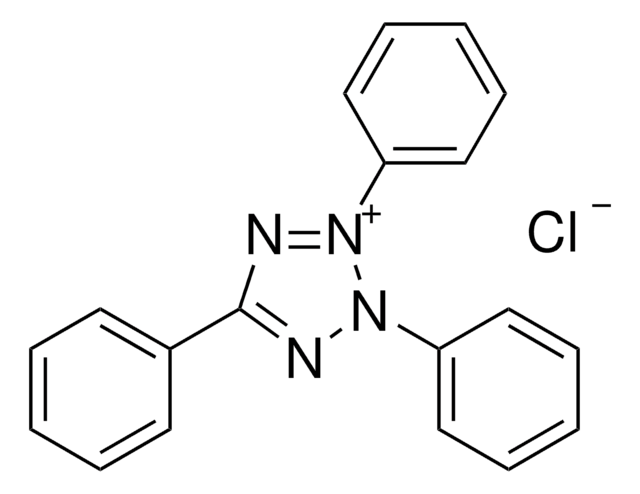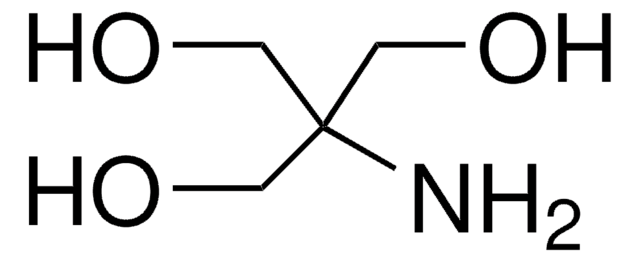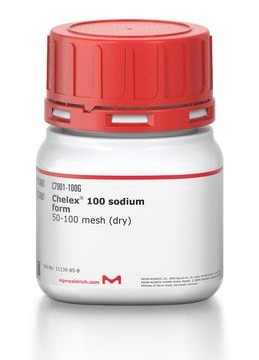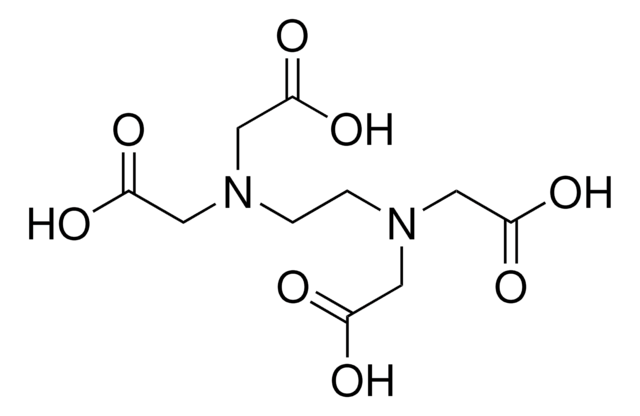71188
Sodium acetate trihydrate
BioUltra, ≥99.5% (NT)
Synonym(s):
Acetic acid sodium salt trihydrate
About This Item
Recommended Products
product line
BioUltra
Quality Level
assay
≥99.5% (NT)
form
powder or crystals
autoignition temp.
1112 °F
technique(s)
precipitation assay: suitable
impurities
insoluble matter, passes filter test
≤0.005% KMnO4-reducing matter (as HCOOH)
pH
8.5-10.0 (25 °C, 3 M in H2O)
solubility
H2O: 3 M at 20 °C, clear, colorless
anion traces
chloride (Cl-): ≤5 mg/kg
phosphate (PO43-): ≤5 mg/kg
sulfate (SO42-): ≤20 mg/kg
cation traces
Al: ≤5 mg/kg
As: ≤0.1 mg/kg
Bi: ≤5 mg/kg
Ca: ≤10 mg/kg
Cd: ≤5 mg/kg
Co: ≤5 mg/kg
Cr: ≤5 mg/kg
Cu: ≤5 mg/kg
Fe: ≤5 mg/kg
K: ≤50 mg/kg
Li: ≤5 mg/kg
Mg: ≤5 mg/kg
Mn: ≤5 mg/kg
Mo: ≤5 mg/kg
Ni: ≤5 mg/kg
Pb: ≤5 mg/kg
Sr: ≤5 mg/kg
Zn: ≤5 mg/kg
λ
3 M in H2O
UV absorption
λ: 260 nm Amax: ≤0.01
λ: 280 nm Amax: ≤0.01
SMILES string
O.O.O.[Na+].CC([O-])=O
InChI
1S/C2H4O2.Na.3H2O/c1-2(3)4;;;;/h1H3,(H,3,4);;3*1H2/q;+1;;;/p-1
InChI key
AYRVGWHSXIMRAB-UHFFFAOYSA-M
Looking for similar products? Visit Product Comparison Guide
Related Categories
Application
- to prepare buffer stock solution/sodium acetate buffer 0.2M for gallium-68 (Ga-68) DOTA-(Tyr3)-octreotate (DOTATATE) chemicals
- in the preparation of ferric reduction ability of serum (FRAS) reagent for FRAS assay
- in the preparation of sodium acetate solution to prepare sodium acetate (NaOAc) buffers for radiolabeling
Biochem/physiol Actions
Other Notes
Storage Class
11 - Combustible Solids
wgk_germany
WGK 1
flash_point_f
Not applicable
flash_point_c
Not applicable
ppe
Eyeshields, Gloves, type N95 (US)
Certificates of Analysis (COA)
Search for Certificates of Analysis (COA) by entering the products Lot/Batch Number. Lot and Batch Numbers can be found on a product’s label following the words ‘Lot’ or ‘Batch’.
Already Own This Product?
Find documentation for the products that you have recently purchased in the Document Library.
Customers Also Viewed
Our team of scientists has experience in all areas of research including Life Science, Material Science, Chemical Synthesis, Chromatography, Analytical and many others.
Contact Technical Service